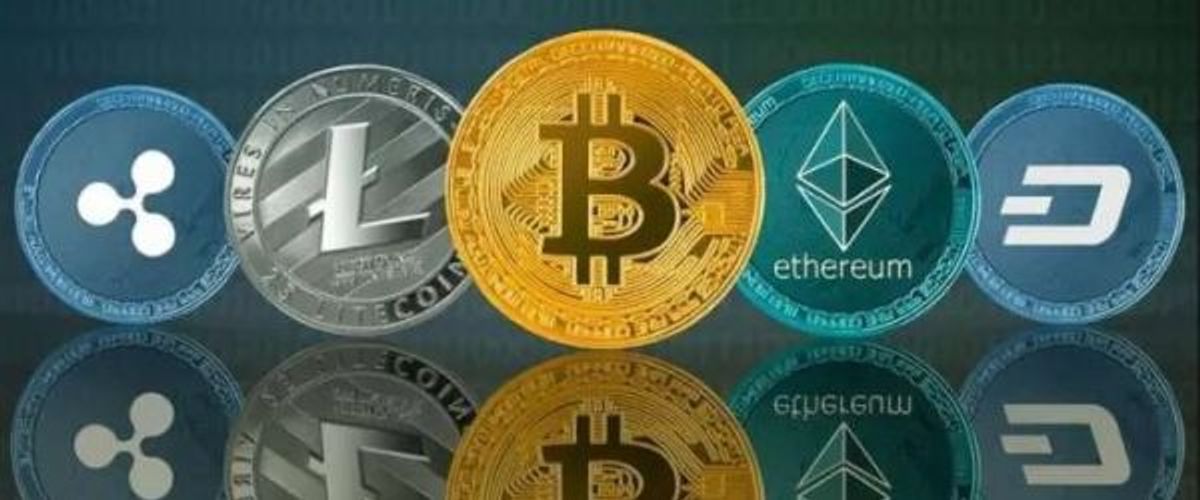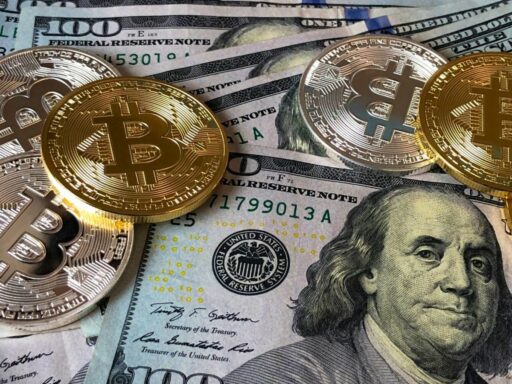As the world becomes increasingly digitized, the evolution of digital wallets represents a significant shift in how we manage and transact money. Samsung’s integration of a crypto wallet marks a pivotal moment in this journey, heralding a new age of mobile transactions where convenience, security, and technological innovation converge. This article explores the transformative impact of Samsung’s foray into cryptocurrency integration and how it signals the future of mobile transactions.
Key Takeaways
- Samsung’s crypto wallet integration is a response to the growing consumer shift towards digital and cryptocurrency transactions, indicating a future where digital wallets are central to financial management.
- Blockchain technology underpins Samsung’s mobile wallet services, providing secure, transparent, and decentralized transaction records that enhance user security and experience.
- Innovations such as contactless payments, offline transactions, and peer-to-peer transfers are revolutionizing mobile wallet services, making them more convenient and versatile.
- The integration of Internet of Things (IoT) and other emerging technologies with digital wallets is set to expand functionality and redefine the scope of mobile transactions.
- Predictions for the next decade of mobile payments include further advancements in digital wallet technology, fostering financial inclusion and transforming global payment systems.
The Evolution of Digital Wallets

From Physical to Digital: A Brief History
The transition from physical wallets to digital ones marks a significant milestone in the evolution of payment methods. Digital wallets have revolutionized the way we transact, offering a level of convenience and security that traditional wallets could not match. Initially, digital wallets were simple tools for online transactions, but they have since evolved into sophisticated platforms that integrate various payment options and financial services.
- The late 1990s saw the birth of digital wallets, coinciding with the rise of e-commerce.
- Early versions were rudimentary, serving mainly for online purchases.
- Advancements such as NFC technology have greatly expanded digital wallet capabilities.
Digital wallets now act as a bridge between financial information and payment gateways, streamlining transactions and reducing the need for physical payment instruments. This shift not only enhances user convenience but also promises greater security against theft and loss.
Consumer Preferences Shifting Towards Digital Solutions
As we navigate through the digital age, consumer preferences are increasingly leaning towards digital solutions for managing finances. The convenience of having a single platform for various transactions is a significant driver behind this shift. Digital wallets not only facilitate payments but also serve as a hub for personal identification, loyalty programs, and digital asset management.
The rise of digital currencies like Bitcoin and Ethereum, along with the potential introduction of central bank digital currencies (CBDCs), is poised to further accelerate the adoption of digital wallets. However, the journey towards widespread acceptance is not without its challenges. Regional adoption rates vary, and overcoming potential barriers is crucial for digital wallets to become the norm.
The evolution of digital wallets reflects a broader trend towards seamless and secure financial management, aligning with the modern consumer’s desire for efficiency and integration in all aspects of life.
Advantages for consumers are clear and numerous:
- Convenience of making purchases anytime, anywhere.
- Enhanced security features to protect financial data.
- Improved customer experience with flexible payment options.
The Impact of Technology on Wallet Functionality
The impact of technology on wallet functionality has been profound, reshaping the landscape of personal finance management. Mobile wallet services are at the forefront of this revolution, constantly innovating to introduce new features that enhance user experience and satisfaction.
- Blockchain integration has brought about a secure, transparent, and decentralized way to record and verify transactions.
- The ability to conduct offline transactions and peer-to-peer transfers has added a layer of convenience previously unattainable.
- Digital wallets are no longer just for credit and debit card data; they now encompass a variety of uses, storing everything from loyalty cards to tickets.
This transition has the potential to redefine the financial landscape, promoting financial inclusion and revolutionizing cross-border transactions.
As emerging technologies continue to evolve, digital wallets are not only becoming more secure and efficient but are also integrating with other platforms to provide a seamless financial experience. The future of digital wallets is likely to be one where they become an integral part of our daily lives, far beyond the traditional wallet’s capabilities.
Samsung’s Foray into Cryptocurrency Integration

Understanding Samsung’s Crypto Wallet Initiative
Samsung’s integration of a cryptocurrency wallet into its mobile ecosystem marks a significant step in the evolution of digital transactions. The initiative aims to provide users with a seamless and secure way to manage their digital assets directly from their Samsung devices. This move not only caters to the growing demand for digital currency management on mobile platforms but also positions Samsung as a forward-thinking player in the mobile payment space.
To ensure the success of this initiative, Samsung has focused on several key areas:
- Security: Leveraging advanced encryption and biometric authentication to protect user assets.
- User Experience: Creating an intuitive interface that simplifies the management of cryptocurrencies.
- Portability: Allowing users to carry and transact with their digital currencies anywhere, anytime.
Samsung’s crypto wallet is designed to be a comprehensive solution for mobile users, integrating both convenience and robust security features to meet the modern financial landscape’s demands.
It’s essential for users to choose a crypto wallet that aligns with their investment needs, prioritizing security, user experience, and portability. Features like open-source platforms, strong security measures, and intuitive interfaces are crucial for efficient management of assets on-the-go.
Benefits of Cryptocurrency Transactions on Mobile Devices
The integration of cryptocurrency wallets into mobile devices heralds a significant shift in the way we think about financial transactions. Mobile wallets equipped with cryptocurrency capabilities offer a level of convenience and security that is hard to match with traditional payment methods. Users can now carry out transactions with digital currencies like Bitcoin and Ethereum directly from their smartphones, which is not only faster but also reduces the need for physical contact, making it a more hygienic option in today’s world.
- Convenience: Cryptocurrency transactions can be completed quickly and easily, without the need for physical cards or cash.
- Security: Advanced encryption and blockchain technology ensure that transactions are secure and immutable.
- Global Reach: Users can send and receive funds across borders without worrying about exchange rates or bank fees.
- Privacy: Cryptocurrency transactions can offer greater privacy than traditional bank transactions.
The seamless integration of software wallets into mobile devices bridges the gap between the traditional financial systems and the burgeoning world of Web3, enabling users to engage with decentralized applications with ease.
Security Measures for Crypto Transactions in Samsung Wallets
Samsung’s commitment to security is evident in the multi-layered approach it takes to protect crypto transactions within its wallets. Encryption and data protection measures are at the forefront, utilizing advanced algorithms to convert sensitive information into unreadable code, thwarting unauthorized access. This is complemented by biometric authentication, which includes fingerprint and facial recognition, ensuring that only the rightful owner can authorize transactions.
In addition to encryption, Samsung wallets are fortified with security protocols that are designed to be resilient against malware attacks and unauthorized intrusions. Two-factor authentication adds an extra layer of security, requiring users to provide two different types of evidence to verify their identity before accessing their wallet or initiating a transaction. Regular security audits and compliance with data protection regulations further enhance the trustworthiness of Samsung’s digital wallet.
The integration of robust security measures is crucial for maintaining the integrity of digital transactions and fostering user confidence in the platform.
Blockchain Technology and Mobile Wallets

The Role of Blockchain in Secure Transactions
Blockchain technology has become a cornerstone in the advancement of digital wallet security. Protecting your private key is crucial for securing crypto assets. Crypto wallets provide a user-friendly interface to manage digital assets on the blockchain, ensuring secure transactions and storage. The decentralized nature of blockchain means that every transaction is recorded on a ledger that is distributed across multiple nodes, making it nearly impossible to alter transaction histories fraudulently.
Blockchain’s transparency and immutability grant users a higher level of trust in the system, as every transaction is verifiable by any party at any time.
The integration of blockchain into mobile wallets not only enhances security but also introduces a new level of efficiency in transactions. Users benefit from faster transaction speeds and reduced costs, thanks to the elimination of intermediaries typically involved in traditional financial systems. Here are some key security features enabled by blockchain technology in mobile wallets:
- Encryption techniques to secure transaction data
- Decentralized verification processes to prevent fraud
- Transparent transaction records for user reassurance
- Secure tokenization to protect sensitive information
Decentralization: The New Era of Financial Independence
The integration of traditional banking with crypto finance is not just a trend; it’s a transformative movement towards a more efficient and inclusive financial ecosystem. Ethereum’s smart contracts, for instance, revolutionize trust and automation in the industry, paving the way for a new era of financial independence.
The shift towards decentralization is evident as users seek control over their financial transactions without the need for intermediaries. This paradigm shift is supported by the ongoing innovation and collaboration between traditional banks and fintech companies, which are integrating cutting-edge solutions to enhance the user experience.
The impact of these changes is profound, with mobile banking apps playing a pivotal role in advancing financial inclusion. As we navigate this digital frontier, it’s imperative to analyze the regulatory and ethical considerations that come with such a significant shift in how we perceive and interact with financial systems.
How Blockchain Integration Benefits Samsung Users
The integration of blockchain technology into Samsung’s digital wallet ecosystem marks a transformative step in mobile transactions. Blockchain’s decentralized nature ensures that each transaction is securely and transparently recorded, enhancing user trust in the platform.
- Security: Blockchain’s immutable ledger prevents tampering and fraud.
- Transparency: Every transaction is visible and verifiable by all network participants.
- Efficiency: Faster transaction processing with reduced need for intermediaries.
The seamless fusion of blockchain with Samsung’s mobile wallet services not only streamlines the transaction process but also opens up new avenues for innovation in payment systems.
With blockchain, Samsung users are poised to experience a new level of financial empowerment. The technology’s ability to facilitate quick, cross-border payments without exorbitant fees is particularly beneficial for those who frequently engage in international transactions. Moreover, the potential for offline transactions and peer-to-peer transfers could revolutionize the way we think about money movement in our increasingly digital world.
Innovations in Mobile Wallet Services

Contactless Payments: The New Normal
The advent of contactless payments has marked a significant shift in consumer behavior, with a clear preference for the convenience and speed it offers. This trend is further bolstered by the widespread issuance of contactless cards and the increasing availability of contactless-enabled point-of-sale (POS) terminals.
The integration of contactless payment methods into mobile wallets represents a leap forward in transaction efficiency. Users can now simply tap their phone or wearable device to complete a purchase, merging the security of digital wallets with the ease of tap-to-go technology.
However, despite the growing adoption, challenges such as limited merchant adoption and security concerns remain. Not all retailers have embraced the technology required to support contactless payments, which can be a barrier in areas where traditional payment methods are still prevalent.
The potential expansion into wearable payments, such as the anticipated Galaxy Ring, suggests a future where our transactions are not just contactless but also more integrated into our daily wear. This could signal a resurgence in wearable payment options, which had previously seen limited success due to the nascent stage of contactless infrastructure and consumer familiarity at the time.
Offline Transactions and Peer-to-Peer Capabilities
The advent of offline transactions and peer-to-peer (P2P) capabilities marks a significant milestone in the evolution of mobile wallets. These features allow users to conduct transactions seamlessly without the need for internet connectivity, which is particularly beneficial in areas with unreliable or no internet service.
Mobile wallets now facilitate direct transfers between individuals, bypassing traditional banking systems and payment gateways. This not only simplifies the process but also reduces transaction times and costs.
The following list highlights the key advantages of offline transactions and P2P capabilities in mobile wallets:
- Independence from internet connectivity
- Reduced reliance on payment gateways
- Enhanced privacy and control over personal financial data
- Accessibility in remote or underserved regions
These innovations are not just about convenience; they represent a shift towards a more inclusive financial ecosystem where users have greater autonomy over their transactions.
Additional Features Enhancing User Experience
Samsung’s integration of a crypto wallet extends beyond mere transaction capabilities. User experience is paramount, and additional features are continuously being developed to ensure a seamless and enjoyable journey.
-
Partner Services and Offers – Collaborating with third-party service providers or merchants to offer app users exclusive deals, discounts, or rewards enhances engagement. It incentivizes users to utilize the app for their financial transactions and purchases.
-
Efficient Search and Filtering – Incorporating search functionality and filtering options enables users to quickly find specific transactions, accounts, or services, saving time and reducing frustration.
-
Customizable Preferences – Allowing users to tailor settings such as font size, notification preferences, and color themes not only enhances personalization but also accommodates diverse preferences and accessibility requirements.
The focus on continuous improvement and user feedback is evident in the evolution of Samsung’s mobile wallet. Experimentation with different design layouts and feature implementations through A/B testing is a testament to their commitment to user satisfaction.
The responsive and adaptive design ensures that the wallet app provides an optimal viewing and interaction experience across various devices. This adaptability is crucial in today’s market where users switch between multiple devices.
The Future of Mobile Transactions

Emerging Technologies Shaping Digital Wallets
The landscape of digital wallets is rapidly transforming, with emerging technologies playing a pivotal role. Blockchain, the backbone of cryptocurrencies like Bitcoin, is revolutionizing the way transactions are recorded and verified, offering a decentralized and transparent ledger that enhances security and reduces the need for intermediaries.
Biometric advancements are also at the forefront, with technologies such as fingerprint and facial recognition becoming more sophisticated. This evolution promises to bolster security and streamline the user experience. Moreover, increased collaboration and partnerships within the industry are likely to spur innovation and integration of these technologies into everyday financial activities.
The integration of these technologies is not just enhancing current features but also paving the way for new capabilities that will redefine the convenience and security of digital transactions.
The Role of IoT in Expanding Wallet Functionality
The Internet of Things (IoT) is rapidly transforming the landscape of digital wallets, enabling a new level of convenience and functionality. IoT integration allows for a seamless connection between digital wallets and a myriad of smart devices, paving the way for innovative transaction methods. Imagine the ease of making purchases directly from your smart refrigerator or initiating payments through your wearable device; these scenarios are becoming a reality as digital wallets evolve to interact with the IoT ecosystem.
The convergence of IoT and mobile wallets signifies a leap towards a more interconnected and efficient payment environment.
Furthermore, the integration with voice-activated virtual assistants is enhancing the user experience. The ability to manage finances through simple voice commands with smart speakers and other voice-controlled devices is not just convenient but also accessible to a wider audience. This transition is not only redefining the financial landscape but also promoting financial inclusion and revolutionizing cross-border transactions.
Predictions for the Next Decade of Mobile Payments
The next decade of mobile payments is poised to be transformative, with advancements in technology driving the industry forward. Biometric authentication, blockchain-based transactions, and the integration with IoT devices are expected to create a more seamless and secure payment experience.
- By 2023, the digital payments segment could reach a value of $9.46 trillion, with growth projected to hit $14.78 trillion by 2027.
- Payment security will intensify, with innovations like tokenization and decentralized identity solutions becoming standard.
- The digital commerce segment, currently the largest, will likely continue to expand as mobile wallet services become even more embedded in our daily transactions.
The synergy between fintech, traditional financial institutions, and regulatory bodies will be crucial in shaping a dynamic and secure mobile banking landscape.
Conclusion
As we have explored throughout this article, Samsung’s integration of a crypto wallet into its mobile devices marks a significant milestone in the evolution of digital transactions. This move not only reflects the growing demand for secure and convenient payment solutions but also signals the potential for mobile wallets to become the cornerstone of financial interactions in the future. With emerging technologies like blockchain enhancing security and transparency, and the continuous innovation in mobile wallet services, users can look forward to a more integrated, efficient, and accessible financial ecosystem. Samsung’s foray into crypto wallet integration is a clear indication that the future of mobile transactions is here, and it is digital.
Frequently Asked Questions
What is the significance of Samsung’s integration of a crypto wallet in mobile devices?
Samsung’s integration of a crypto wallet signifies a major step towards the convergence of mobile technology and digital currencies. It offers users the ability to securely store, send, and receive cryptocurrencies directly on their mobile devices, enhancing the convenience and accessibility of digital asset transactions.
How does blockchain technology enhance the security of mobile wallet transactions?
Blockchain technology enhances mobile wallet security by providing a decentralized and transparent ledger for transactions. This reduces the risk of fraud and hacking, as every transaction is recorded on a network of computers, making it nearly impossible to alter without consensus.
What are the benefits of contactless payments through mobile wallets?
Contactless payments through mobile wallets offer a fast, secure, and hygienic way to make transactions without the need for physical cash or cards. They utilize near-field communication (NFC) technology to enable quick tap-and-go payments, reducing the time spent at checkout and minimizing contact with public surfaces.
Can mobile wallets function without an internet connection?
Some mobile wallets have the capability to perform offline transactions, allowing peer-to-peer transfers and payments even when there is no internet connectivity. This feature enhances the versatility and reliability of mobile wallets, especially in areas with limited network coverage.
What role will the Internet of Things (IoT) play in the future of digital wallets?
The IoT is expected to play a significant role in the evolution of digital wallets by enabling seamless transactions between smart devices. This could lead to more integrated payment solutions where everyday objects, such as appliances and vehicles, can initiate transactions autonomously, further simplifying the payment process.
What predictions can be made for the next decade of mobile payments?
Predictions for the next decade of mobile payments include further integration of cryptocurrencies, widespread adoption of IoT payment solutions, and the introduction of new technologies that enhance transaction speed and security. Digital wallets are likely to become even more embedded in our daily lives, potentially replacing traditional banking methods for many users.






I have recommended this blog to all of my friends and family It’s rare to find such quality content these days!
Let me know what type of content you’d like to see more of in the future!